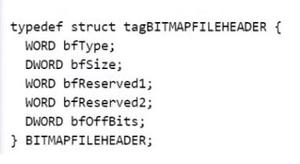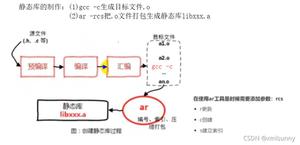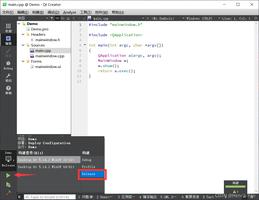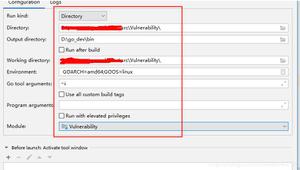如何执行文本文件的二进制搜索
我有一个很大的文本文件(5Mb),我在我的Android应用程序中使用。我将该文件创建为预先分类的字符串列表,并且该文件一旦创建就不会更改。如何对这个文件的内容执行二分搜索,而不需要逐行读取匹配的字符串?如何执行文本文件的二进制搜索
回答:
由于文件内容没有变化,所以可以将文件分成多个部分。说A-G,H-N,0-T和U-Z。这使您可以检查第一个字符,并立即将可能的设置切割为原始尺寸的四分之一。现在线性搜索不会花费太长时间,或者读取整个文件可能是一个选项。如果n/4仍然过大,这个过程可能会延长,但这个想法是相同的。将搜索细分构建到文件结构中,而不是试图在内存中完成所有操作。
回答:
5MB文件并不是那么大 - 您应该可以将每行读入String[]数组,然后您可以使用java.util.Arrays.binarySearch()找到所需的行。这是我推荐的方法。
如果您不想将整个文件读入应用程序,那么它会变得更加复杂。如果该文件的每一行是相同的长度,并且该文件已经排序,那么你就可以打开但在RandomAccessFile中的文件,并使用seek()这样执行二进制搜索自己......
// open the file for reading RandomAccessFile raf = new RandomAccessFile("myfile.txt","r");
String searchValue = "myline";
int lineSize = 50;
int numberOfLines = raf.length()/lineSize;
// perform the binary search...
byte[] lineBuffer = new byte[lineSize];
int bottom = 0;
int top = numberOfLines;
int middle;
while (bottom <= top){
middle = (bottom+top)/2;
raf.seek(middle*lineSize); // jump to this line in the file
raf.read(lineBuffer); // read the line from the file
String line = new String(lineBuffer); // convert the line to a String
int comparison = line.compareTo(searchValue);
if (comparison == 0){
// found it
break;
}
else if (comparison < 0){
// line comes before searchValue
bottom = middle + 1;
}
else {
// line comes after searchValue
top = middle - 1;
}
}
raf.close(); // close the file when you're finished
,如果该文件没有固定宽度的行,那么您不能轻松地执行二进制搜索,而无需首先将其加载到内存中,因为您无法像使用固定宽度的行一样快速跳转到文件中的特定行。
回答:
在一个统一的字符长度的文本文件中,你可以寻找字符间距的中间字符,开始阅读字符,直到你打开你的分隔符,然后使用后续字符串作为元素明智中间的近似值。但是,在android中这样做的问题显然不能get random access to a resource(尽管我想你可以每次重新打开它)。此外,这种技术不会推广到其他类型的地图和集合。
另一种选择是(使用RandomAccessFile)在文件的开始处编写一个ints的“数组” - 每个String一个 - 然后返回并用它们相应的字符串的位置更新它们。再次搜索将需要跳来跳去。
我会做什么(并在我自己的应用程序中做过)是在文件中实现hash set。这是一个单独的链接与树木。
import java.io.BufferedInputStream; import java.io.DataInputStream;
import java.io.File;
import java.io.FileInputStream;
import java.io.IOException;
import java.io.RandomAccessFile;
import java.util.ArrayList;
import java.util.Collections;
import java.util.LinkedList;
import java.util.Set;
class StringFileSet {
private static final double loadFactor = 0.75;
public static void makeFile(String fileName, String comment, Set<String> set) throws IOException {
new File(fileName).delete();
RandomAccessFile fout = new RandomAccessFile(fileName, "rw");
//Write comment
fout.writeUTF(comment);
//Make bucket array
int numBuckets = (int)(set.size()/loadFactor);
ArrayList<ArrayList<String>> bucketArray = new ArrayList<ArrayList<String>>(numBuckets);
for (int ii = 0; ii < numBuckets; ii++){
bucketArray.add(new ArrayList<String>());
}
for (String key : set){
bucketArray.get(Math.abs(key.hashCode()%numBuckets)).add(key);
}
//Sort key lists in preparation for creating trees
for (ArrayList<String> keyList : bucketArray){
Collections.sort(keyList);
}
//Make queues in preparation for creating trees
class NodeInfo{
public final int lower;
public final int upper;
public final long callingOffset;
public NodeInfo(int lower, int upper, long callingOffset){
this.lower = lower;
this.upper = upper;
this.callingOffset = callingOffset;
}
}
ArrayList<LinkedList<NodeInfo>> queueList = new ArrayList<LinkedList<NodeInfo>>(numBuckets);
for (int ii = 0; ii < numBuckets; ii++){
queueList.add(new LinkedList<NodeInfo>());
}
//Write bucket array
fout.writeInt(numBuckets);
for (int index = 0; index < numBuckets; index++){
queueList.get(index).add(new NodeInfo(0, bucketArray.get(index).size()-1, fout.getFilePointer()));
fout.writeInt(-1);
}
//Write trees
for (int bucketIndex = 0; bucketIndex < numBuckets; bucketIndex++){
while (queueList.get(bucketIndex).size() != 0){
NodeInfo nodeInfo = queueList.get(bucketIndex).poll();
if (nodeInfo.lower <= nodeInfo.upper){
//Set respective pointer in parent node
fout.seek(nodeInfo.callingOffset);
fout.writeInt((int)(fout.length() - (nodeInfo.callingOffset + 4))); //Distance instead of absolute position so that the get method can use a DataInputStream
fout.seek(fout.length());
int middle = (nodeInfo.lower + nodeInfo.upper)/2;
//Key
fout.writeUTF(bucketArray.get(bucketIndex).get(middle));
//Left child
queueList.get(bucketIndex).add(new NodeInfo(nodeInfo.lower, middle-1, fout.getFilePointer()));
fout.writeInt(-1);
//Right child
queueList.get(bucketIndex).add(new NodeInfo(middle+1, nodeInfo.upper, fout.getFilePointer()));
fout.writeInt(-1);
}
}
}
fout.close();
}
private final String fileName;
private final int numBuckets;
private final int bucketArrayOffset;
public StringFileSet(String fileName) throws IOException {
this.fileName = fileName;
DataInputStream fin = new DataInputStream(new BufferedInputStream(new FileInputStream(fileName)));
short numBytes = fin.readShort();
fin.skipBytes(numBytes);
this.numBuckets = fin.readInt();
this.bucketArrayOffset = numBytes + 6;
fin.close();
}
public boolean contains(String key) throws IOException {
boolean containsKey = false;
DataInputStream fin = new DataInputStream(new BufferedInputStream(new FileInputStream(this.fileName)));
fin.skipBytes(4*(Math.abs(key.hashCode()%this.numBuckets)) + this.bucketArrayOffset);
int distance = fin.readInt();
while (distance != -1){
fin.skipBytes(distance);
String candidate = fin.readUTF();
if (key.compareTo(candidate) < 0){
distance = fin.readInt();
}else if (key.compareTo(candidate) > 0){
fin.skipBytes(4);
distance = fin.readInt();
}else{
fin.skipBytes(8);
containsKey = true;
break;
}
}
fin.close();
return containsKey;
}
}
测试程序
import java.io.File; import java.io.IOException;
import java.util.HashSet;
class Test {
public static void main(String[] args) throws IOException {
HashSet<String> stringMemorySet = new HashSet<String>();
stringMemorySet.add("red");
stringMemorySet.add("yellow");
stringMemorySet.add("blue");
StringFileSet.makeFile("stringSet", "Provided under ... included in all copies and derivatives ...", stringMemorySet);
StringFileSet stringFileSet = new StringFileSet("stringSet");
System.out.println("orange -> " + stringFileSet.contains("orange"));
System.out.println("red -> " + stringFileSet.contains("red"));
System.out.println("yellow -> " + stringFileSet.contains("yellow"));
System.out.println("blue -> " + stringFileSet.contains("blue"));
new File("stringSet").delete();
System.out.println();
}
}
您还需要pass a Context它,如果当你修改其Android系统,因此它可以访问getResources()方法。
你也可能会想要stop the android build tools from compressing the file,这显然只能做到 - 如果你正在使用GUI - 通过将文件的扩展名更改为像jpg这样的东西。这使得我的应用程序的处理速度提高了大约100到300倍。
您也可以使用NDK来查看giving yourself more memory。
回答:
这里是我快速放在一起的东西。它使用两个文件,一个包含文字,另一个包含偏移量。偏移文件的格式是这样的:第一10位包含单词大小,最后22位包含该偏移量(字位置,例如,AAAH将是0,abasementable将是4,等等)。它以大端(java标准)编码。希望它有助于某人。
word.dat:
aaahabasementableabnormalabnormalityabortionistabortion-rightsabracadabra
wordx.dat:
00 80 00 00 01 20 00 04 00 80 00 0D 01 00 00 11 _____ __________ 01 60 00 19 01 60 00 24 01 E0 00 2F 01 60 00 3E _`___`_$___/_`_>
我在C#中创建这些文件,但这里是它的代码(它使用一个txt文件与单词由crlfs分隔)
static void Main(string[] args) {
const string fIn = @"C:\projects\droid\WriteFiles\input\allwords.txt";
const string fwordxOut = @"C:\projects\droid\WriteFiles\output\wordx.dat";
const string fWordOut = @"C:\projects\droid\WriteFiles\output\word.dat";
int i = 0;
int offset = 0;
int j = 0;
var lines = File.ReadLines(fIn);
FileStream stream = new FileStream(fwordxOut, FileMode.Create, FileAccess.ReadWrite);
using (EndianBinaryWriter wwordxOut = new EndianBinaryWriter(EndianBitConverter.Big, stream))
{
using (StreamWriter wWordOut = new StreamWriter(File.Open(fWordOut, FileMode.Create)))
{
foreach (var line in lines)
{
wWordOut.Write(line);
i = offset | ((int)line.Length << 22); //first 10 bits to the left is the word size
offset = offset + (int)line.Length;
wwordxOut.Write(i);
//if (j == 7)
// break;
j++;
}
}
}
}
这是二进制文件搜索Java代码:
public static void binarySearch() { String TAG = "TEST";
String wordFilePath = Environment.getExternalStorageDirectory().getAbsolutePath() + "/word.dat";
String wordxFilePath = Environment.getExternalStorageDirectory().getAbsolutePath() + "/wordx.dat";
String target = "abracadabra";
boolean targetFound = false;
int searchCount = 0;
try {
RandomAccessFile raf = new RandomAccessFile(wordxFilePath, "r");
RandomAccessFile rafWord = new RandomAccessFile(wordFilePath, "r");
long low = 0;
long high = (raf.length()/4) - 1;
int cur = 0;
long wordOffset = 0;
int len = 0;
while (high >= low) {
long mid = (low + high)/2;
raf.seek(mid * 4);
cur = raf.readInt();
Log.v(TAG + "-cur", String.valueOf(cur));
len = cur >> 22; //word length
cur = cur & 0x3FFFFF; //first 10 bits are 0
rafWord.seek(cur);
byte [] bytes = new byte[len];
wordOffset = rafWord.read(bytes, 0, len);
Log.v(TAG + "-wordOffset", String.valueOf(wordOffset));
searchCount++;
String str = new String(bytes);
Log.v(TAG, str);
if (target.compareTo(str) < 0) {
high = mid - 1;
} else if (target.compareTo(str) == 0) {
targetFound = true;
break;
} else {
low = mid + 1;
}
}
raf.close();
rafWord.close();
} catch (FileNotFoundException e) {
e.printStackTrace();
} catch (IOException e) {
e.printStackTrace();
}
if (targetFound == true) {
Log.v(TAG + "-found " , String.valueOf(searchCount));
} else {
Log.v(TAG + "-not found " , String.valueOf(searchCount));
}
}
回答:
虽然这听起来有点小题大做,不存储你需要作为平面文件来做到这一点的数据。建立数据库并查询数据库中的数据。这应该既有效又快速。
以上是 如何执行文本文件的二进制搜索 的全部内容, 来源链接: utcz.com/qa/257636.html








